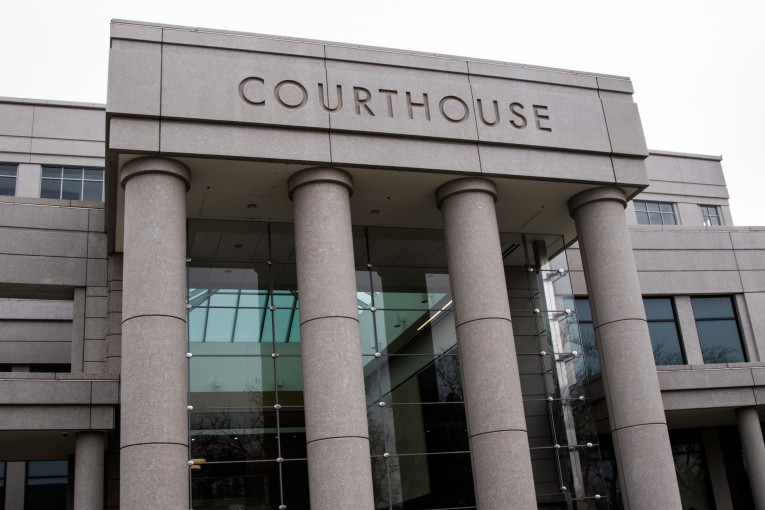
 By Amy Berberyan
By Amy Berberyan
WOODLAND, CA–The trial of Theo Kelso and Isaiah Berkley reconvened last Friday in Yolo County Superior Court, with a police officer and a senior criminalist being called in as witnesses in this case, amid charges of robbery, use of firearm, and attempted murder.
The first witness called was Officer Andy Henderson, a police officer who arrived at the residence where the incident took place around 7:50 p.m.
The victim had described three suspects as all wearing ski masks. Furthermore, when questioned about specific details, she recalled that one of them had “floral print jeans” and another was wearing a “black jacket.”
The victim said she had heard a knock on her front door, and was struck when she opened it. She said marijuana had been stolen from her during this robbery. Less than ⅛ of an ounce of it was taken in her roommate’s briefcase, which the victim saw the robbers pick up.
Berkley’s attorney John Paul Brennan asked about the victim’s prior actions. Officer Henderson said that the victim had been smoking weed by an apartment belonging to a friend. Two other people showed up to smoke with them.
The victim identified one of those people by name—Theo Kelso—and identified that his jacket matched the one worn by one of the suspects in her house. Through the holes in the ski masks, she said she could tell all the robbers were Black men.
Regarding the small amount of weed taken, DA Brennan questioned the size: “About half a sandwich baggie? Would it fill that even?” Officer Henderson said it would not.
Returning to the events of the crime, the timeline was: the victim smoked for a few hours at the apartment, went home, and almost two hours later she heard a knock on her door.
The victim said she never went into the apartment, but instead stayed outside and smoked in the car. She identified one of the individuals she was smoking with then as Kelso, whom she recognized by the black jacket he wore when smoking weed and by his voice.
The victim identified the second person with whom she was smoking by the floral pattern on his jeans.
Deputy District Attorney Paul Richardson established that the victim’s home on Glenwood Place was roughly 3.5 miles from the apartment complex.
DDA Richardson asked about the injury the victim had sustained on the top back portion of her head. She had suffered a laceration that had started to swell by the time Officer Henderson saw it, who said it was consistent with a pistol strike “because of the size of it being consistent with a barrel hitting someone on the head.”
According to Officer Henderson, the victim did not appear overly intoxicated, but looked like she had been drinking or smoking. He stated that “her eyelids were a little droopy and she had bloodshot eyes, which could have been from crying or smoking weed.”
He maintained that she had not been distracted, as she had understood and answered all of his questions in a way that presented logical, clear lines of thinking.
Defense Attorney Brennan turned the line of questioning to the 911 dispatch that Officer Henderson received about the incident, citing it was strange how the number of perpetrators increased.
Originally, it said one person had committed the robbery. As Officer Henderson was responding, the dispatch reported a party of two. By the time he arrived, the final dispatch said three people.
Officer Henderson maintained that he had never asked the witness to clarify why the number changed, and DDA Richardson added that the 911 dispatcher was actively adding information as the victim reported the events of the incident.
DDA Richardson brought out a senior criminalist with more than 1,000 hours of on-the-job training as his witness.
Richardson offered this witness as an “expert in the fields of forensic firearm examination, specifically the cartridge case and bullet analysis.” Judge Tom Dyer recognized this.
The witness explained that, as a bullet is discharged from a firearm, the weapon’s rifling leaves marks on that bullet. Comparing the marks on bullets or cartridge cases can show whether they were released from the same firearm, given that firearms “leave unique marks.”
Using his crime lab, this witness was able to create an examination report “shortly after” his tests using specific pieces from the incident that they had received from the Woodland Police Department.
These items included three .9 mm Luger cartridge cases, a .45 ACP cartridge case, and four bullet fragments. Based on his tests, the witness determined the evidence could have come out of either the same firearm or guns made from “the same tooling and at the same time.”

